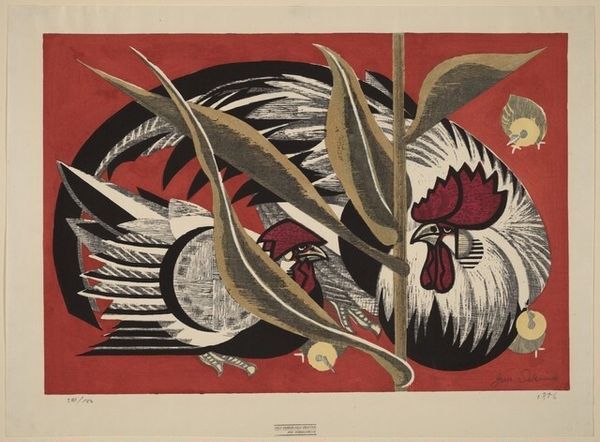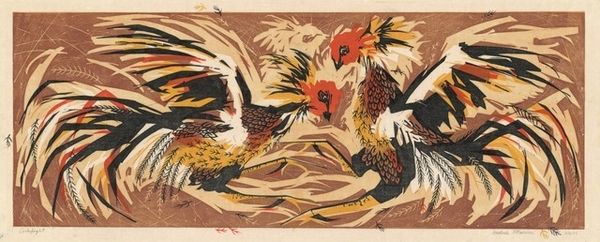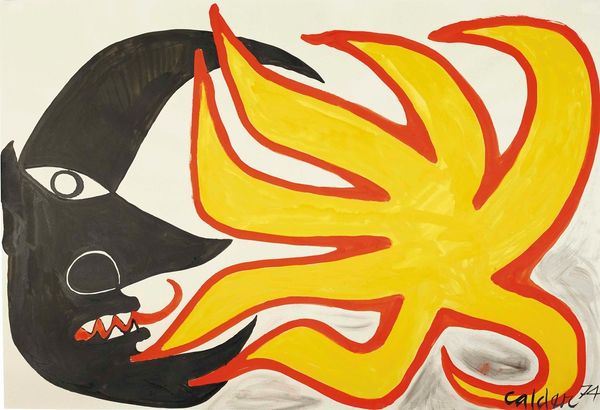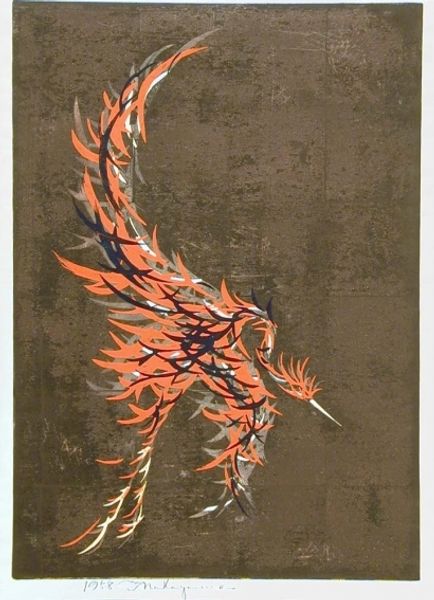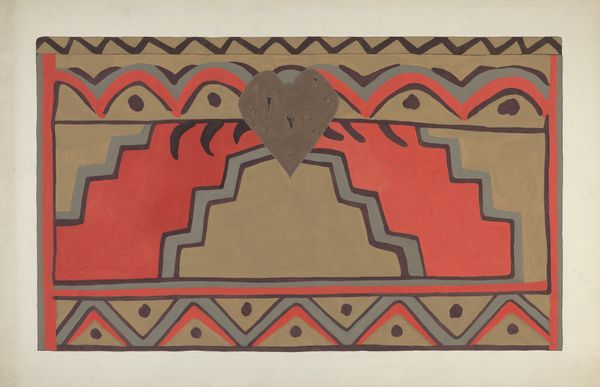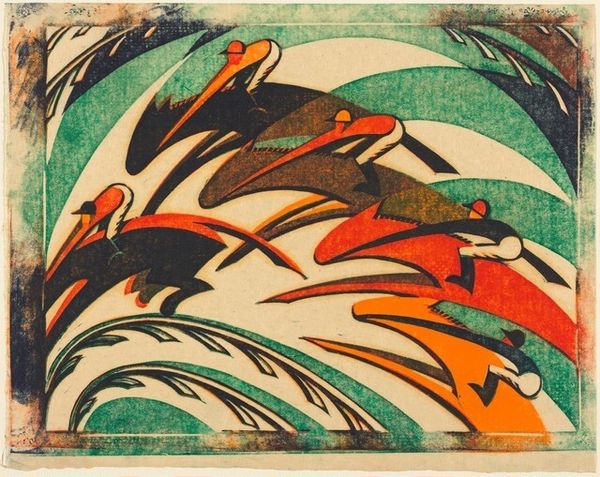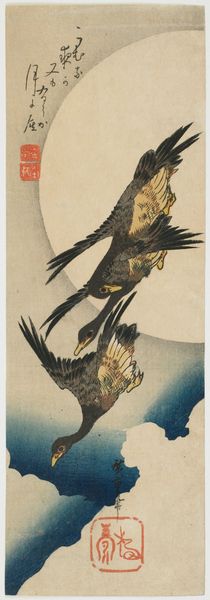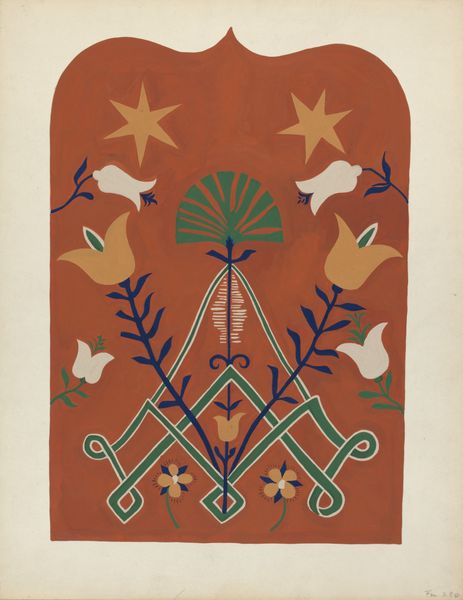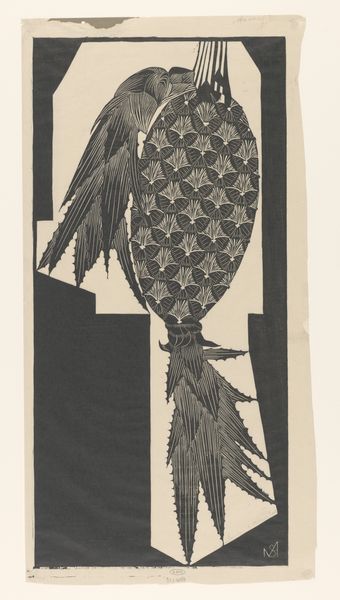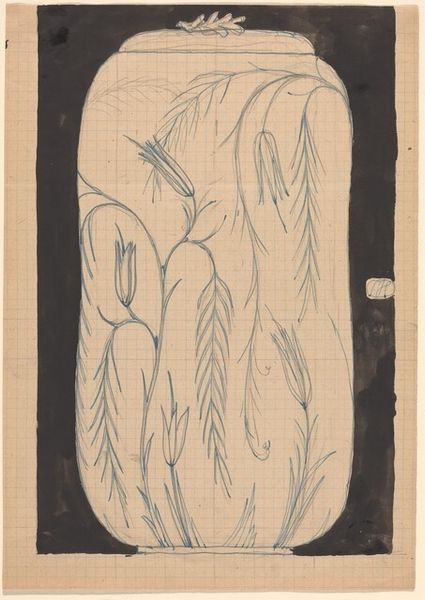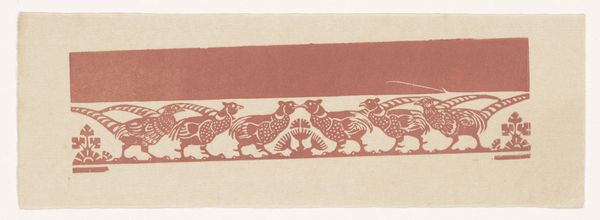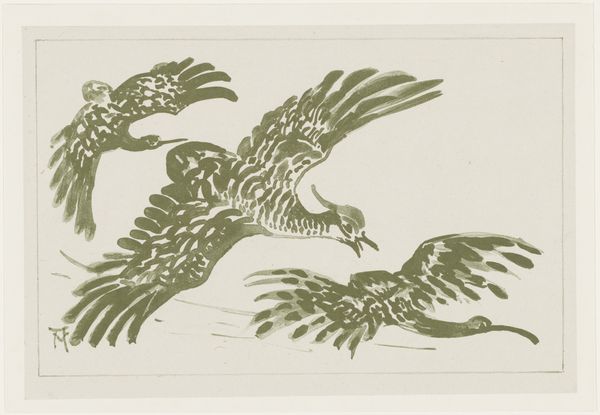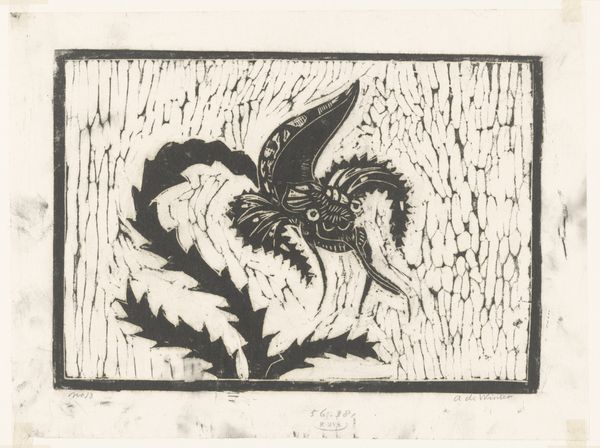
Copyright: National Gallery of Art: CC0 1.0
Curator: This lively image, titled "A Couple of Roosters," is a 1958 woodcut print by Japanese artist Jun'ichiro Sekino. Editor: What strikes me immediately is its energetic clash. It’s more than just a visual of two roosters; there's an inherent struggle, a kind of territorial dispute, embedded in their stance and the boldness of the lines. Curator: Indeed. Consider how the rooster has been utilized as a symbol across various cultures. Often representing courage, virility, and even aggression, the rooster carries significant cultural weight. Notice the bold lines used to depict the animals' plumage, which echoes folk-art traditions and the simplified aesthetics of naïve art. Editor: Precisely. That simplification and naiveté, I argue, speak to a wider context. The post-war period saw an exploration, or rather a reclamation, of folk traditions as a response to rapid modernization and Westernization in Japan. The rooster's inherent ties to rural life can thus be interpreted as a symbol of resilience. Curator: You make an interesting point regarding folk tradition, which leads into Ukiyo-e's themes of fleeting beauty and everyday life, with which Sekino engaged profoundly throughout his work. This piece isn't purely decorative; its dynamism captures a very visceral moment. Editor: I see how those traditions create a powerful statement in their simplicity. It underscores, for me, the enduring relevance of folk art and animal symbology in periods of socio-cultural upheaval. What appears straightforward, on closer inspection, delivers a profound commentary on culture, identity, and gendered aggression. Curator: Perhaps it’s a reflection of societal conflicts externalized through this contest. What is visible may point to what remains unsaid. These images remind us of continuous dialogues, the symbols and gestures of resilience that bind communities together. Editor: Yes. We often talk about power structures—here, embodied in these feathery pugilists. But this piece challenges us to rethink how symbols of rural and 'naive' masculinity negotiate modernizing worlds and how their resistance is presented with humor and aesthetic play.
Comments
No comments
Be the first to comment and join the conversation on the ultimate creative platform.
